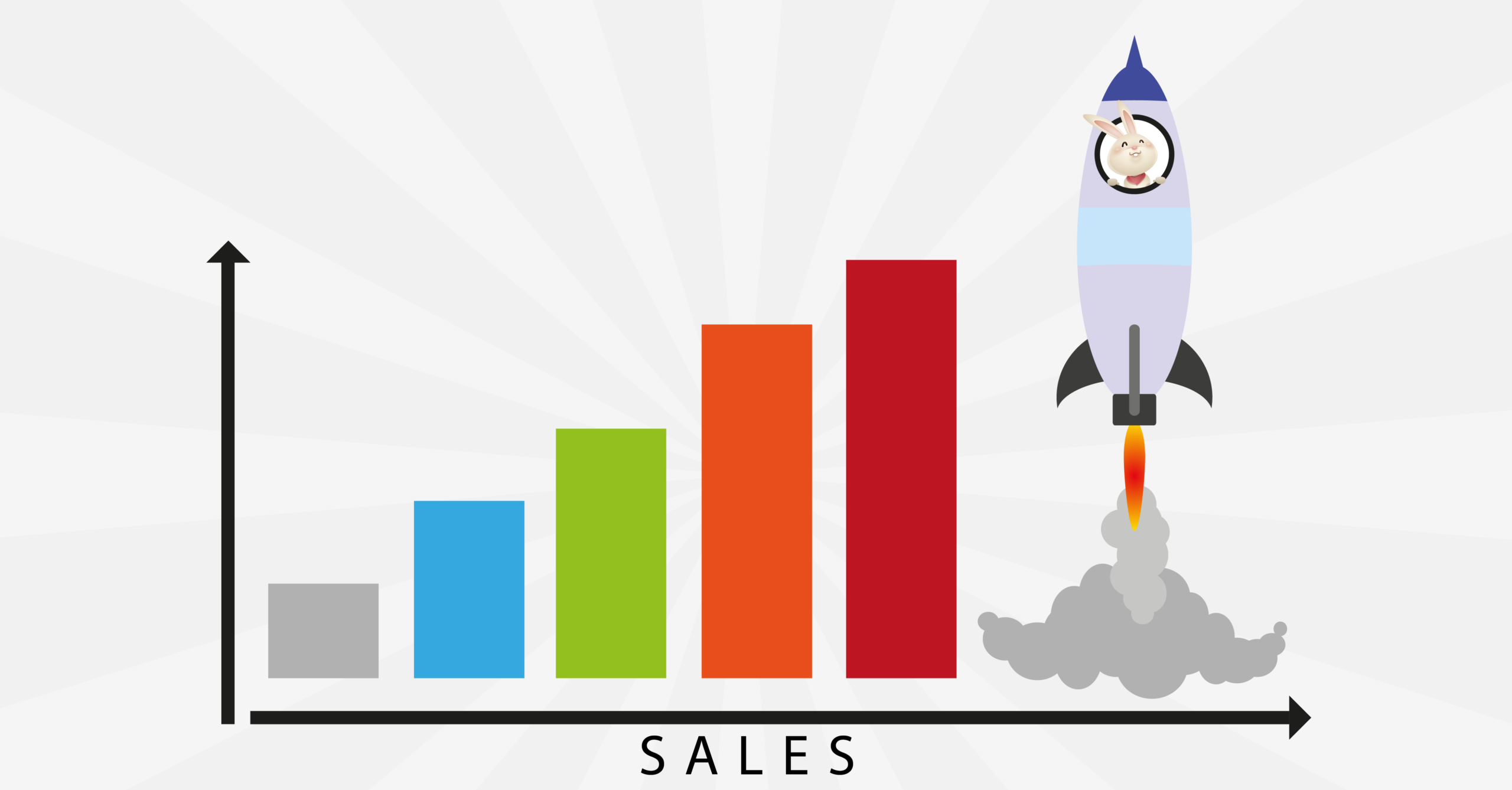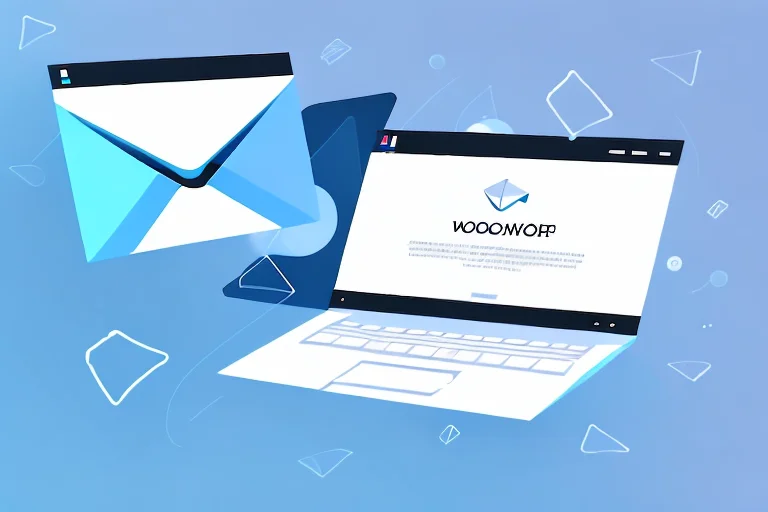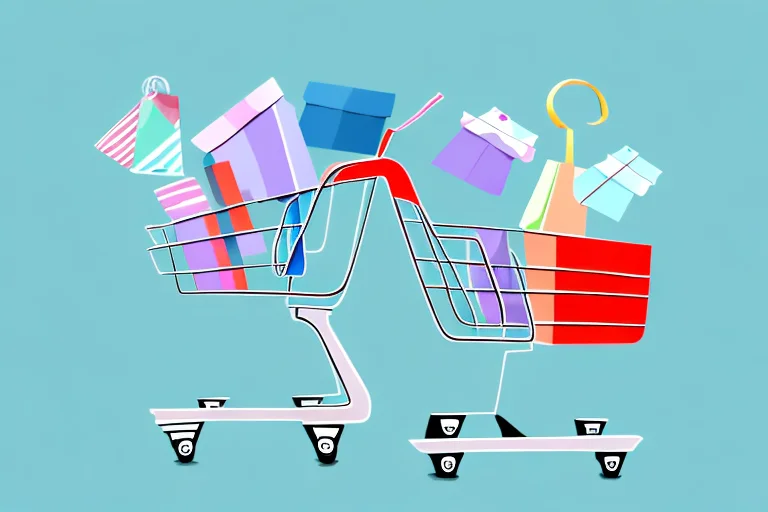In today’s digital landscape, email marketing has become an indispensable tool for businesses, particularly those operating in the e-commerce realm. For WooCommerce businesses, leveraging the power of email marketing can significantly boost sales and drive customer engagement. This article aims to delve into the importance of email marketing in WooCommerce and provide strategies to help businesses propel their sales to new heights.
Understanding the Importance of Email Marketing in WooCommerce
Email marketing plays a crucial role in e-commerce, and WooCommerce is no exception. With email campaigns, businesses can reach out to their customers directly, fostering brand loyalty and driving repeat purchases. Unlike other marketing channels, emails offer a personalized touch, allowing businesses to tailor their messaging according to individual customer preferences, behavior, and purchasing history.
But what exactly makes email marketing in WooCommerce so important? Let’s dive deeper into the topic and explore the various ways in which email campaigns can benefit businesses using this popular e-commerce platform.
The Role of Email Marketing in E-commerce
In the vast e-commerce landscape, where competition is fierce, email marketing stands out as a reliable means to build relationships and retain customers. By delivering targeted and relevant content directly to subscribers’ inboxes, businesses can establish themselves as industry experts and trusted partners.
Furthermore, email marketing enables businesses to communicate important updates, such as new product launches, exclusive offers, and discounts, ensuring that customers are always in the loop. The ability to segment email lists and create personalized messages further enhances the effectiveness of email campaigns in nurturing customer relationships.
But it doesn’t stop there. Email marketing in WooCommerce goes beyond just nurturing customer relationships; it plays a vital role in driving conversions and maximizing sales.
Why WooCommerce Businesses Need Email Marketing
For WooCommerce businesses, email marketing is an invaluable tool for driving sales and fostering customer loyalty. The platform’s integration with email marketing software allows businesses to leverage WooCommerce’s robust features and extend their marketing reach.
With email marketing, WooCommerce businesses can showcase their products to a highly targeted audience, ensuring that their messages resonate with potential buyers. By harnessing email campaigns, businesses can convey the unique value propositions of their products, effectively persuading customers to make a purchase.
Moreover, email marketing in WooCommerce enables businesses to track customer behavior and engagement, providing valuable insights into their preferences and interests. This data can be used to refine marketing strategies, optimize product offerings, and tailor future email campaigns for better results.
Additionally, WooCommerce businesses can use email marketing to provide post-purchase support and encourage customer feedback. By sending follow-up emails after a purchase, businesses can ensure customer satisfaction and address any concerns or issues promptly.
In conclusion, email marketing is an integral part of any successful WooCommerce business. It allows businesses to engage with customers at every stage of the sales funnel, build relationships, drive sales, and foster brand loyalty. By leveraging the power of email campaigns, businesses can unlock the full potential of WooCommerce and achieve their e-commerce goals.
Building an Effective Email Marketing Strategy
To harness the full potential of email marketing, WooCommerce businesses need to develop a well-thought-out strategy. Here are key considerations for creating an effective email marketing strategy:
Identifying Your Target Audience
Understanding your target audience is the first step in creating successful email campaigns. Use data analytics to gain insights into customer demographics, preferences, and behaviors. This information will allow you to personalize your messages and tailor your offerings to meet the specific needs of your audience.
Analyze customer data provided by WooCommerce, such as purchase history and browsing behavior, to segment your email list and create targeted campaigns. By sending relevant content to specific customer segments, you can achieve higher open rates, click-through rates, and conversions.
For example, let’s say you run an online clothing store. By analyzing your customer data, you may discover that a certain segment of your audience consists of young professionals who are interested in trendy fashion. With this information, you can create email campaigns that highlight the latest fashion trends and offer exclusive discounts on popular items.
Furthermore, understanding your target audience allows you to craft personalized subject lines that resonate with their interests and needs. For instance, if you have a segment of customers who are fitness enthusiasts, you can create subject lines that emphasize the benefits of your activewear collection and promote upcoming fitness events.
Creating Engaging Content
To capture the attention of your subscribers, it is crucial to create engaging and compelling content. Craft a captivating subject line that entices recipients to open your email. The body of your email should provide valuable information, offer exclusive deals, or present intriguing product recommendations.
When creating content, consider the different stages of the customer journey. For example, you can send welcome emails to new subscribers, introducing them to your brand and offering a special discount on their first purchase. For existing customers, you can send personalized recommendations based on their past purchases or browsing history.
Ensure that your content aligns with your brand’s voice and values, resonating with your audience. Incorporate visually appealing elements, such as images and videos, to enhance the visual appeal of your emails. Remember, a well-designed and informative email is more likely to capture the reader’s attention and prompt them to take the desired action.
For instance, if you run a home decor store, you can create visually stunning emails showcasing different room inspirations and providing links to featured products. By offering design tips and showcasing how your products can transform a space, you can engage your audience and encourage them to explore further.
Optimizing Email Frequency and Timing
Find the right balance between keeping your audience engaged and avoiding overwhelming them with excessive emails. Monitor the response rates of your campaigns to determine the optimum email frequency for your audience.
Consider the timing of your email sends. Analyze customer behavior and identify the times when your subscribers are most likely to engage with your emails. Experiment with different send times and monitor the performance to identify the optimal time frames for your campaigns.
Keep in mind that different industries and target audiences may have varying preferences when it comes to email frequency and timing. For example, if you have a target audience of busy professionals, it might be more effective to send emails during lunch breaks or after work hours when they have more time to engage with their inbox.
Additionally, consider the seasonality and relevance of your email campaigns. For instance, if you run an online bookstore, you can send emails promoting summer reading lists during the months leading up to summer vacation, when people are more likely to be looking for new books to read.
By optimizing your email frequency and timing, you can ensure that your messages are delivered when they are most likely to be seen and acted upon by your target audience.
Leveraging WooCommerce Features for Email Marketing
When it comes to email marketing, WooCommerce offers a plethora of features and integrations that can take your campaigns to the next level. Let’s dive into two key functionalities that you can leverage to enhance your email marketing efforts.
Utilizing WooCommerce Email Templates
One of the standout features of WooCommerce is its provision of pre-designed email templates. These templates are specifically designed to align with the platform’s user-friendly design, making it easy for businesses to create visually appealing emails that effectively showcase their products and promotions.
By utilizing these templates, you can save valuable time and effort that would otherwise be spent on designing emails from scratch. With just a few clicks, you can have a professionally designed email ready to be sent out to your subscribers. However, don’t forget to customize these templates to match your brand’s style and voice. This will ensure a consistent customer experience and help reinforce your brand identity.
Whether you’re running a flash sale, announcing a new product launch, or sending out a monthly newsletter, WooCommerce’s email templates provide you with the flexibility to create engaging content that captures your audience’s attention.
Integrating Email Marketing Plugins
Another powerful feature of WooCommerce is its seamless integration with various email marketing plugins. These plugins, such as Mailchimp and Constant Contact, offer advanced automation and segmentation features that can revolutionize your email marketing campaigns.
With these integrations, you can easily sync your WooCommerce customer data with your chosen email marketing platform. This enables you to segment your audience based on their purchase history, preferences, and behavior, allowing you to create highly targeted and personalized email campaigns.
Imagine being able to send tailored product recommendations to customers who have previously purchased similar items or offering exclusive discounts to your most loyal customers. With WooCommerce’s integration with email marketing plugins, these possibilities become a reality.
Furthermore, these plugins provide robust automation capabilities, enabling you to set up automated email sequences triggered by specific actions or events. From welcoming new subscribers to recovering abandoned carts, you can automate various touchpoints along your customer’s journey, saving you time and ensuring that no opportunity is missed.
By leveraging these integrations, you can streamline your email marketing processes, maximize the impact of your campaigns, and ultimately drive more conversions and revenue for your business.
In conclusion, WooCommerce offers a range of features and integrations that can enhance your email marketing efforts. By utilizing the platform’s email templates and integrating with popular email marketing plugins, you can create visually appealing emails, deliver personalized content, and automate various aspects of your email marketing campaigns. Take advantage of these functionalities to level up your email marketing game and achieve greater success.
Advanced Email Marketing Techniques for WooCommerce
To take your email marketing efforts to the next level, consider incorporating these advanced techniques:
Segmentation and Personalization
Segment your email list based on customer preferences and behaviors to deliver hyper-targeted content. Use personalized product recommendations, tailored offers, and targeted messaging to provide a highly personalized experience for every subscriber. By doing so, you increase the likelihood of engagement and conversions.
Segmentation and personalization are powerful tools that allow you to divide your email list into specific groups based on various criteria such as demographics, purchase history, and browsing behavior. This level of customization enables you to send relevant content to each segment, ensuring that your subscribers receive emails that are tailored to their individual needs and interests.
For example, if you have an online clothing store, you can segment your list based on gender, age, and style preferences. This way, you can send personalized recommendations and offers to each segment, increasing the chances of conversion. A customer who prefers casual wear will receive different recommendations than someone who prefers formal attire.
Additionally, you can leverage behavioral data to create dynamic email campaigns. If a customer abandons their shopping cart, you can automatically send them a reminder email with a personalized offer to encourage them to complete their purchase. This level of personalization makes your emails more relevant and increases the likelihood of conversion.
Automated Email Campaigns
Automate various stages of the customer journey with triggered emails. Set up automated welcome emails, shopping cart abandonment sequences, and post-purchase follow-ups to keep customers engaged and encourage repeat purchases. Automated email campaigns save time and ensure that no valuable marketing opportunities slip through the cracks.
Automated email campaigns are a game-changer for e-commerce businesses. They allow you to set up a series of pre-defined emails that are triggered by specific actions or events. For example, when a new subscriber joins your email list, you can automatically send them a welcome email introducing your brand and offering a discount code as a token of appreciation.
Another powerful use case for automated email campaigns is shopping cart abandonment. When a customer adds items to their cart but doesn’t complete the purchase, you can send them a sequence of reminder emails with incentives to encourage them to come back and finalize their order. These automated reminders can significantly increase your conversion rates and recover potentially lost sales.
Post-purchase follow-ups are also essential for nurturing customer relationships. After a customer makes a purchase, you can send them a series of emails to thank them for their purchase, provide order updates, and offer related products or exclusive discounts for future purchases. This helps to build customer loyalty and encourages repeat business.
A/B Testing for Email Campaigns
Continuously optimize your email campaigns by conducting A/B tests. Test different subject lines, visuals, calls to action, and content to identify the elements that resonate most with your audience. By leveraging A/B testing, you can refine your email marketing strategy and achieve higher engagement rates and conversions.
A/B testing, also known as split testing, is a method where you create two or more variations of an email and send them to different segments of your audience. By comparing the performance of each variation, you can determine which elements are more effective in driving engagement and conversions.
For example, you can test different subject lines to see which one generates higher open rates. You can also test different visuals or calls to action to see which ones result in more clicks and conversions. By analyzing the results of these tests, you can make data-driven decisions to optimize your email campaigns and achieve better results.
It’s important to note that A/B testing should be an ongoing process. As consumer preferences and behaviors change over time, what worked in the past may not be as effective in the future. By regularly testing and refining your email marketing strategy, you can stay ahead of the curve and ensure that your campaigns continue to deliver optimal results.
Measuring the Success of Your Email Marketing Strategy
To gauge the effectiveness of your email marketing strategy, it is crucial to track key metrics and continuously analyze campaign performance. Here are some essential metrics to monitor:
When it comes to email marketing, tracking key metrics is vital for understanding how your campaigns are performing. By analyzing these metrics, you can gain valuable insights into the engagement and effectiveness of your email marketing strategy.
Key Metrics to Track
One of the most important metrics to measure is the open rate. This metric tells you how many recipients opened your email and provides an indication of how well your subject line and preheader resonated with your audience. A high open rate suggests that your emails are grabbing attention and enticing recipients to explore further.
Another crucial metric to monitor is the click-through rate (CTR). This metric measures the percentage of recipients who clicked on a link within your email. A high CTR indicates that your email content and call-to-action are compelling, leading recipients to take action and visit your website or landing page.
Conversion rate is another metric that deserves your attention. This metric tracks the percentage of recipients who completed a desired action, such as making a purchase or filling out a form, after clicking through from your email. A high conversion rate indicates that your email marketing strategy is effectively driving desired actions and generating results.
While tracking engagement metrics is essential, it’s also crucial to assess the impact of your email campaigns on your bottom line. Analyzing the revenue generated from your email campaigns can provide valuable insights into the return on investment (ROI) of your email marketing efforts. By understanding how much revenue your campaigns are generating, you can make informed decisions about budget allocation and campaign optimization.
Unsubscribe rates are another metric that should not be overlooked. Monitoring the number of recipients who opt out of your email list can help you evaluate the relevance and quality of your content. A high unsubscribe rate may indicate that your emails are not meeting the expectations of your audience or that your targeting needs adjustment.
Analyzing and Adjusting Your Strategy
Once you have gathered data on these key metrics, it’s time to analyze the results and identify areas for improvement. By diving into the data, you can gain insights into what is working and what isn’t, allowing you to make data-driven decisions to optimize your email marketing strategy.
Based on the insights gained from data analysis, you can adjust your strategy accordingly. Experiment with different approaches, content formats, and targeting techniques to continually optimize your email marketing efforts. Test different subject lines, email layouts, and call-to-action buttons to see what resonates best with your audience. By being open to experimentation and willing to adapt, you can improve the effectiveness of your email campaigns.
It’s important to remember that email marketing is a dynamic field. To stay ahead of the competition, it’s crucial to stay informed about emerging trends and best practices. Keep an eye on industry news, attend webinars, and participate in forums to stay up to date with the latest developments in email marketing. By staying informed, you can ensure that your strategies are aligned with current best practices and take advantage of new opportunities as they arise.
In conclusion, implementing effective email marketing strategies in your WooCommerce business can propel your sales to new heights. By tracking key metrics, analyzing campaign performance, and continuously adjusting your strategy, you can unlock the true potential of email marketing in driving WooCommerce sales. Remember, success in email marketing requires a commitment to continuous improvement and staying informed about industry trends. With the right approach, email marketing can be a powerful tool for growing your business and engaging with your audience.
Ryzeo – A Leader in E-Commerce Email Marketing
Ryzeo, a leading B2B ecommerce email agency, consistently propels businesses to extraordinary growth by adding an additional $40k to $100k per month in revenue through our tailored, data-driven email marketing campaigns. Our customers witness a remarkable average sales growth of 16%, with some experiencing a surge of more than 30%. This measurable success can be attributed to our effective, 8-step methodology:
- Gathering emails
- Creating user profiles
- Implementing email marketing automation
- Developing a product feed
- Setting up a personalization system
- Incorporating product recommendations into emails and on websites
- Generating an insightful email newsletter
- Crafting targeted campaigns such as welcome series, product view, cart abandonment, and post-purchase upsell emails
We kickstart this process by collecting emails, laying the groundwork for a robust database. This information helps us in creating user profiles, offering invaluable insights into customer behavior. With our sophisticated email marketing automation, we deliver tailored messages at just the right moment, effectively guiding the customer journey. Our unique product feed creation and personalization system allow us to align product recommendations with individual customer preferences, driving increased engagement and sales. Finally, we maintain regular communication through value-adding newsletters that keep our clients’ brands at the top of their customers’ minds.
Connect with Ryzeo today and let our results-driven strategies significantly elevate your sales and enhance your brand’s resonance. Begin your transformative journey with Ryzeo by visiting our website ryzeo.com and scheduling your free strategy session. With Ryzeo, your business can rise to new heights of success.
Schedule Your Free Strategy Session – Book a Demo
Contact Ryzeo today and start seeing results! Visit us at ryzeo.com.







